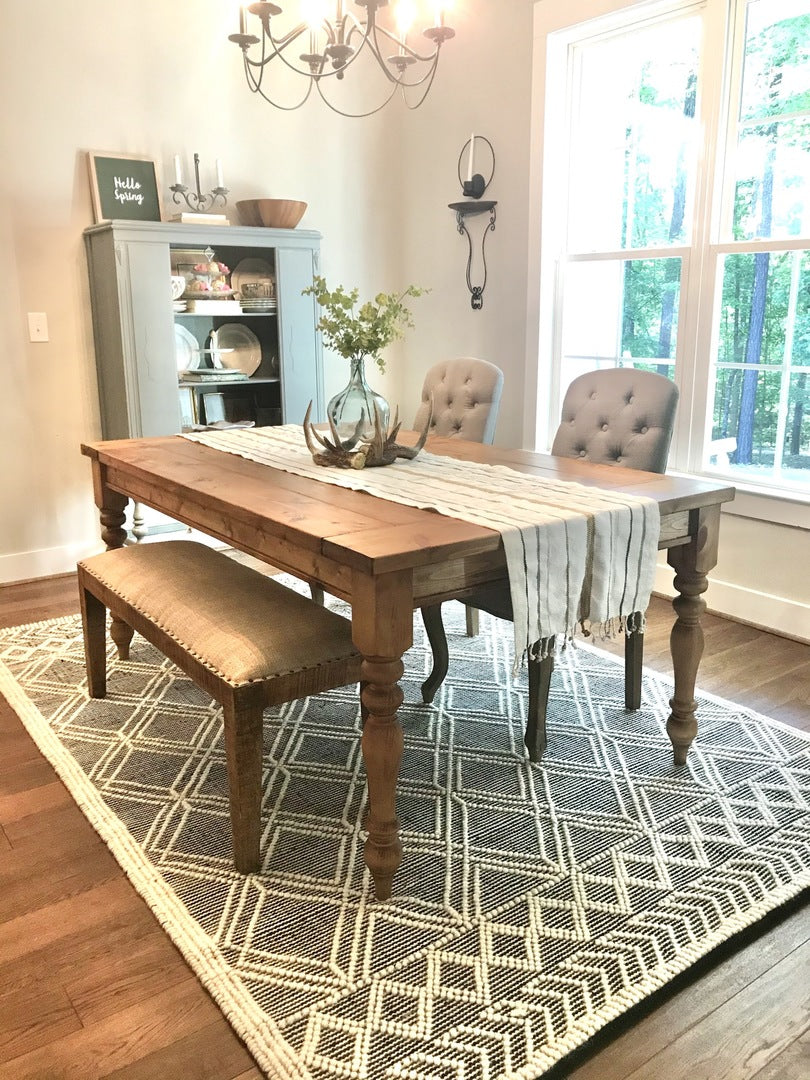Special Dining Room Table Legs to Transform Your Dining Location
Wiki Article
A Comprehensive Consider Dining Table Leg Styles: Discovering the Ideal Match
Selecting the appropriate table leg style is essential for both aesthetic appeal and functional performance. Standard four legs offer classic sophistication and security, while the pedestal base supplies increased legroom and a modern look. For those with larger tables, trestle legs guarantee sturdy assistance, whereas barrette legs introduce a mid-century modern-day ambiance with their minimal style. The x-shaped legs mix modern style with enhanced stability. Each of these choices brings distinct advantages, making the option more than just a matter of choice. Explore even more to discover which style perfectly matches your eating space and way of life.Traditional Four Legs
Among the different types of eating table leg styles, the conventional four-leg design stays a classic option for lots of families. Four legs supply balanced support, guaranteeing the table remains steady and qualified of birthing substantial weight (dining room table legs).From an aesthetic perspective, the conventional four-leg layout can be conveniently adjusted to numerous interior styles. Whether crafted from timber, metal, or a combination of products, these legs can be elaborately carved, sleek and minimalistic, or anything in between. Their flexibility enables them to enhance both rustic and contemporary settings seamlessly.
Moreover, the uncomplicated structure of the four-leg design facilitates ease of movement and positioning within a space. Unlike more complicated bases, this style lessens obstructions, providing adequate legroom for diners. In recap, the standard four-leg table leg design marries enduring sophistication with useful capability, making it an astute selection for those looking for both kind and function in their eating furnishings.
Pedestal Base
Commonly celebrated for its sophisticated and space-efficient layout, the pedestal base is a prominent option to the typical four-leg configuration in dining table leg designs. Without edge legs, restaurants are managed greater freedom of movement, making it an ideal option for round and oval tables that advertise even more intimate and comprehensive celebrations.The main column itself uses a canvas for elaborate designs and creative expressions, adding a component of aesthetic interest beneath the table. In recap, the pedestal base incorporates performance with design, making it an improved and useful alternative for varied dining settings.
Trestle Legs
Trestle legs offer a robust and timeless structure for dining tables, identified by their horizontal cross-bracing article source and sturdy assistance light beams. Stemming from middle ages times, this layout has advanced yet maintained its important structure, making it a perennial fave in both conventional and contemporary setups. The main trestle beam of light, typically supported by two or even more vertical articles, offers extraordinary security, allowing for bigger table sizes without the need for extra legs.A significant advantage of trestle leg tables is the sufficient legroom they supply. Unlike tables with four edge legs, the lack of obstructions at the table's sides supplies unblocked space for chairs and restaurants, boosting comfort and availability. This makes trestle tables perfect for accommodating bigger gatherings, whether in a dining space or a reception hall.
From rustic farmhouse to smooth modern layouts, trestle legs can be personalized to match specific tastes. Their enduring allure and practical advantages make trestle legs an engaging option for those looking for both style and functionality in their dining table.
Hairpin Legs

The allure of barrette legs hinges on their simpleness and versatility - dining room table legs. Readily available in a series of materials, consisting of steel and brass, they can be completed in various shades to complement various indoor designs. Whether coupled with a rustic wood tabletop or a modern glass surface, hairpin legs effortlessly blend functionality with a touch of classic beauty
Durability is another remarkable attribute of barrette legs. Regardless of their fragile look, these legs are engineered to bear considerable weight, ensuring the eating table stays steady and protected. In addition, they are relatively simple to install, making them a prominent option for DIY enthusiasts and professional furniture makers alike.
X-Shaped Legs

Created from products such as steel, wood, or a combination of both, X-shaped legs can be tailored to match different layout choices. Steel legs frequently lend a smooth and commercial feeling, perfect for loft-style apartments and contemporary dining areas.
Furthermore, the engineering behind X-shaped legs makes certain also weight distribution, reducing the danger of wobbling and improving durability. This makes them especially appropriate for larger table that need extra support. Basically, X-shaped legs mix sensible design with modern-day aesthetics, making them a timeless choice for varied eating settings.
Final Thought
my site A thorough understanding of eating table leg styles discloses the unique characteristics and benefits of each layout. Trestle legs make sure robust assistance for larger tables, and barrette legs introduce a mid-century modern visual.Report this wiki page